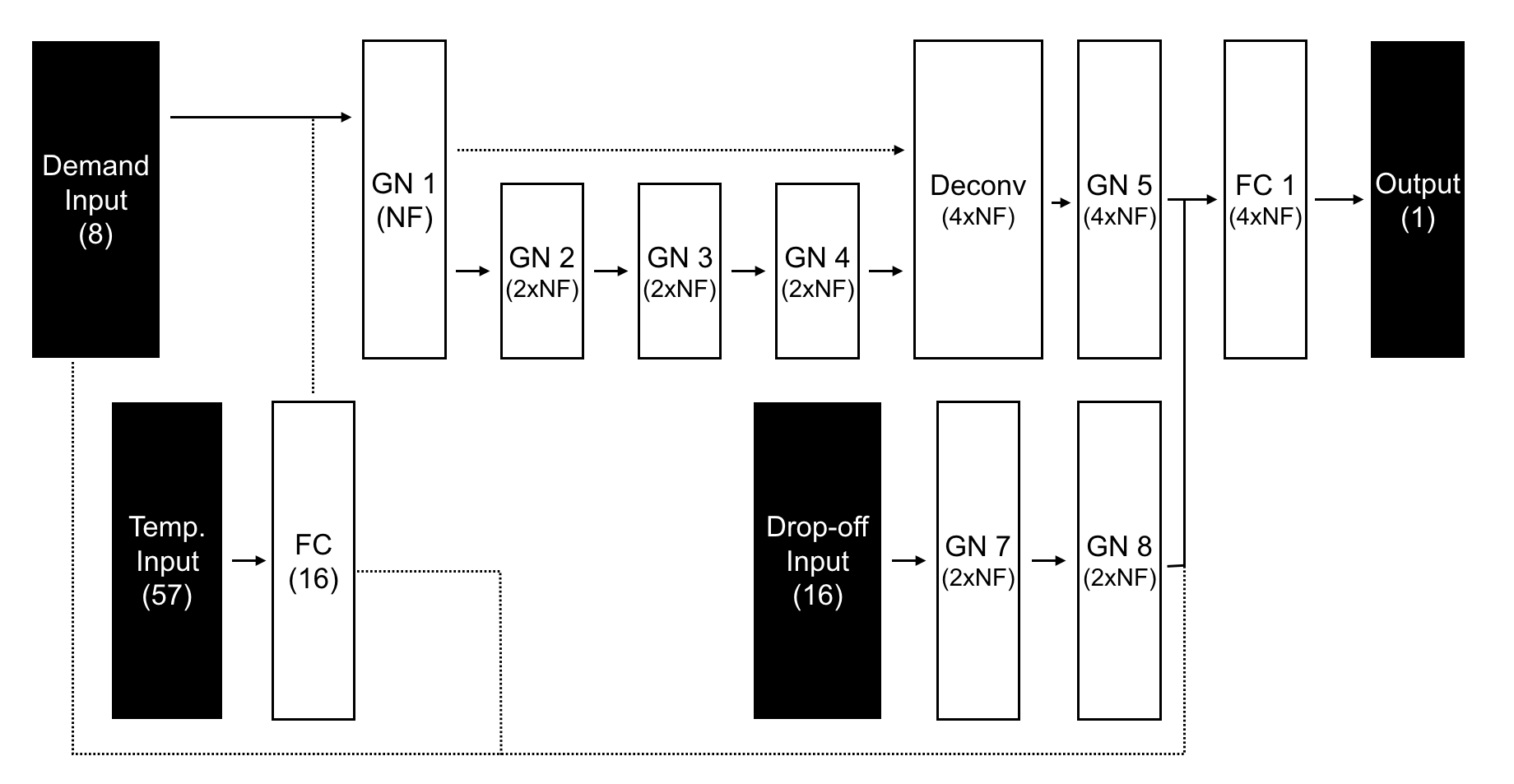Demand Forecasting from Spatiotemporal Data with Graph Networks and Temporal-Guided Embedding
Short-term demand forecasting models commonly combine convolutional and recurrent layers to extract complex spatiotemporal patterns in data. Long-term histories are also used to consider periodicity and seasonality patterns as time series data. In this study, we propose an efficient architecture, Temporal-Guided Network (TGNet), which utilizes graph networks and temporal-guided embedding. Graph networks extract invariant features to permutations of adjacent regions instead of convolutional layers. Temporal-guided embedding explicitly learns temporal contexts from training data and is substituted for the input of long-term histories from days/weeks ago. TGNet learns an autoregressive model, conditioned on temporal contexts of forecasting targets from temporal-guided embedding. Finally, our model achieves competitive performances with other baselines on three spatiotemporal demand dataset from real-world, but the number of trainable parameters is about 20 times smaller than a state-of-the-art baseline. We also show that temporal-guided embedding learns temporal contexts as intended and TGNet has robust forecasting performances even to atypical event situations.
PDF Abstract

